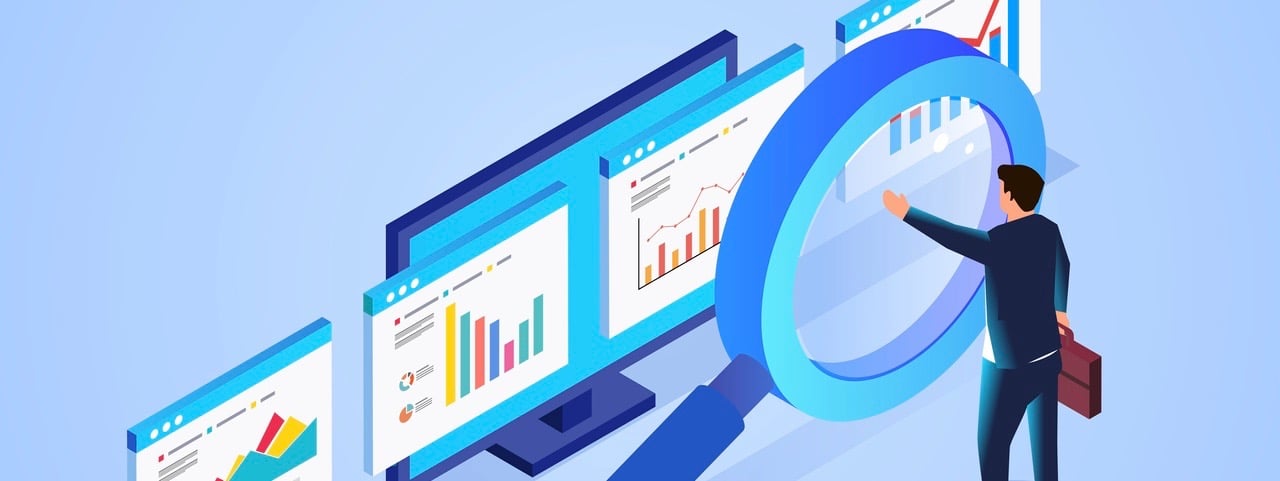Ancient Romans preferred a loss that occurred due to following rules to a victory where one bent or broke the rules. Why? Because in the long run, having/knowing the rules will give you the most consistency and provide the best net-positive results. How did this serve the Romans? Well, they were undisputed on the battlefield for more centuries than any other military force in history.
Oddly enough, the same rule applies in the world of marketing. This is not even that big of a shock or a secret; otherwise, The Art of War wouldn’t be such a popular read among the top marketing experts.
The key factor to a successful marketing campaign is not achieving a one-time success. It’s using a methodology that works every single time. This is what sustainable marketing success is all about. Once you learn the steps that give you the best outcome, replicating success will no longer be a challenge.Naturally, whenever marketing is involved, you need to take a look at the user research.
Marketing expert Padraig O’Connor has worked on many market research projects for both public companies and startups alike. He claims that his most successful marketing initiatives were grounded in data and user research. O’Connor explains being close to your customer is vital. “Knowledge about your target audience is crucial when it comes to marketing. Being close to the customers means you’ll be more effectively able to reach them through the right channel with the right message.”

Padraig O’Connor, a marketing expert with vast experience in market research. He previously worked in marketing within the martech sector at HubSpot and fintech sector at Wealthsimple. O’Connor has run both his own user research studies and managed research agencies tasked with conducting large scale quantitative and qualitative studies.
1. Start with valid user research objectives
Any time you do any kind of research on users, it could be classified as user research. By this logic, you could consider reading the label on the shampoo bottle while on the toilet, doing product research, or looking through your window to check the weather meteorology.
You need some direction, which usually means pinpointing exactly what you want to learn about the users. You also need to have in mind what kind of results you’re looking for. O’Connor says it’s important to have a few clear research questions. He cautions that you can’t learn everything about your users in one study and advises focusing on the most crucial gap within your current knowledge of users.
The three main things you want to learn are:
- Consider pain points throughout the entire process: The most important thing you need to understand is that not all the problems your users have are related to the checkout stage or the payment process. With the right UX platform, you’ll be able to track this process every step of the way and identify these points.
- User’s motivations behind adding a product to the cart: What kind of thought process are they going through when choosing what to add to the cart? Are they adding it in order to buy and abandon the purchase later on, or are they using it as an unofficial wish list?
- Understand why they fail to complete the purchase: This part is so important because the reason actually gives you an insight that you can use to improve your conversion rate. After all, if they’re abandoning because you’re asking them to register first, you can just make this step optional and enjoy an immediate bump in revenue.
You see, users are getting savvier by the minute, and they realize that most of the time, you’re actually giving them discounts based on their shopping carts and wishlists. You shouldn’t mistake this for real shopping cart abandonment since they were never going to buy to begin with. O’Connor points out users won’t always have the solutions on how to solve issues they come across but says this shouldn’t be a goal of user research.
2. Craft better surveys
The next major challenge that you’re facing is the quality of your surveys and finding the best ways to improve them. Namely, while you are looking for the answers, you also need to focus on the question. An answer to the wrong question will often be meaningless, even misleading.
The majority of enterprises fail because they don’t check if there’s a market need for the product that they’re planning to sell. This is a serious problem, one that you have to address during market research, but how do you go about it?
You can’t just ask if they are interested in your product. Even someone who is just mildly interested or amused with the idea of your profit could give you an affirmative answer.
People have a long list of desires, wishes, and interests, but a lot of these are conditional, and you can’t expect to get valid answers unless you add relevant conditions.
The first additional question (other than just generic “would you like to have…”) would be, would you be willing to buy this product at an X cost?
Everyone would love to have a robot butler, but not a lot of people would be willing to pay $10,000 or more for the privilege.
Also, remember that, in surveys, there are no consequences to their actions. So, your survey takers can give answers from a much safer perspective. If you just ask someone if they would buy your product, answering “Yes” literally doesn’t cost them a thing. Actually buying, on the other hand, means that you’ll have to spend your own money, possibly even postponing some other purchase you were looking forward to.
So, in order to get much better answers, try to make the scenario in question as immersive as possible. O’Connor suggests using some qualitative questions to allow users to explain the rationale behind their answers.

3. Every method is different, and you need them all
Which is better, interviews or surveys?
A lazy answer would be: it depends on what you’re looking for. However, the problem with this answer is not just that it’s lazy, an even bigger problem is the fact that it’s only partially accurate.
It’s not one or the other; you need both of these methods and some others in order to get a full picture.
On the one hand, you need to see what the numbers show; however, in order for numbers to mean anything, your sample of test subjects needs to be big enough. When surveying just a few people, the randomness factor can cause a huge problem and give you inconclusive results (or even mislead you).
However, when your sample body is large enough, the stats become far more reliable. O’Connor recommends using a sample size calculator for surveys to ensure you can be confident in the data. For interviews he recommends at least ten or more be conducted so you can spot themes in users’ answers.
You should also format your survey properly. What you want is to give people a chance to add some nuance to their answers. This is why most surveys have five degrees of stances regarding various issues (strongly disagree, disagree, don’t know, agree, and strongly agree).
When it comes to interviews, you want to ask open-ended questions and help people express themselves. While you do want their authentic answers, you also want to help them out a bit. There are a lot of people who can’t verbalize what bothers them or even what they like.
Now, with the help of AI-driven analytical tools, you can have your cake and eat it, too. Namely, you can feed a lot of complex (usually labeled as descriptive questions) into the platform and have it extract necessary insights.
The more sources you include in the process, the more reliable insights will be. So, take your time and choose a wide array of methods for the process.
4. Pay special attention to user emotions and sentiment
If people only bought after a calculated estimation and based on research, you would be in a peculiar scenario where there’s only one business in every market – the one with the objectively best offer. Sure, the objective is not as easy to figure out here. This is why you need to factor in user emotions.
Just take a look at brand loyalty.
Is the iPhone really better than its Samsung equivalent? Sure, you may know common talking points about how the iPhone has a better camera, but without looking out, can you express the difference in camera quality in technical terms? What about seeing two images next to each other, one taken by an iPhone and the other taken by its Android equivalent? How sure are you that you would be able to tell the difference?
The bottom line is that people feel emotions towards brands. Some evoke feelings of nostalgia (a restaurant where they went with someone special), while others make you feel like a part of a community (people who watch the same stream or play the same game).
Overall, sentiment monitoring can be handled through monitoring of social media mentions. This is a great way to see how your audience interacts when they think you’re not listening and a way to learn something new about your brand. Seeing as how you’re already doing it to grow your social media presence and adjust your strategy, this won’t be too much out of the way.
User research needs to be systematic and focused in order to yield the best results
Ultimately, the key factor you need to understand is that insights aren’t like some major cathartic epiphany that will change your entire business from the root and ensure your success for years to come. It’s something that you have to gather continuously. O’Connor reminds us that user behavior changes over time and so too will the questions you want answered so fresh continuous user research is key.
It’s like an inventory or a budget. The sooner you make this shift in your mindset and develop methods, goals, and rules for user research and insight management, the better.








